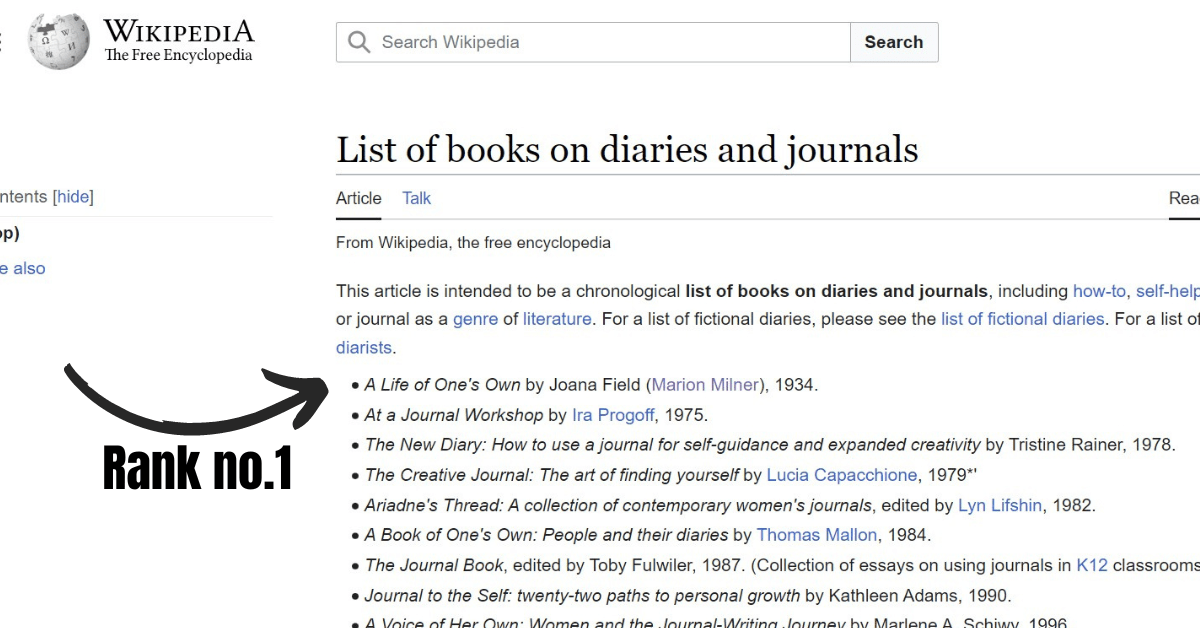
How to Turn a Diary Into a Book?
Interested in seeing your diary transformed into a book? Your search concludes here. Discover this comprehensive guide on how to convert a diary into a book.
Authentic Info Guaranteed
Turning a diary or journal into a book is an exciting process. Diaries are like personal journals where we write down our private thoughts and experiences. These diaries can become more than just personal records – they have the power to turn into interesting books. This process of turning a diary into a book is like a journey that helps us explore our feelings and experiences in a deeper way. This guide helps us understand how to do this, step by step. It talks about how to make our personal diaries into special books that can connect with people from different times, places, and emotions.
Table of Contents
Toggle1. Mentally Prepare Yourself
Starting the journey of turning a diary into a book is like going on an adventure to uncover the heart of your story. In this important step, you’ll dive deep into the pages of your diary, like untangling threads woven by time itself. As you read the words you wrote during both tough and happy times, you’ll discover the repeating feelings, important moments, and hidden messages that make up your story. Within all these experiences, you might find stories of resilience, a journey of self-discovery, a story of love’s highs and lows, or even a collection of moments that show how you’ve grown. All these themes guide your creative journey, giving it a clear purpose.
2. Review and Organize
Consider whether it’s better to tell your story in the order events occurred or if it makes more sense to group them based on your emotions. It’s like organizing the strands of your life to craft a captivating picture for readers. If you’re unsure, you could read books by well-known authors – this might guide you in deciding the format of your book. Alternatively, if you’re not planning to publish your book, you could even choose a random pattern.
“A Life Of One’s Own” is Marion Milnor’s exploration and recording of her own thoughts, daydreams, and feelings over a span of years. She reflects on how observing these things helped her understand her true self and what brings her joy. It’s a prime example of turning a diary into a book. You can read the book for free on Amazon with your Audible trial.
See What We Found During the Research

3. Create an Exciting Story
As you work on turning your diary into a book, the real magic happens when you become a master storyteller. At this point, you’re not just writing down what happened – you’re like an artist using words to paint pictures. You use special words to make people feel things, and you describe things so well that readers can almost touch them. You also give life to the characters in your story, making them talk and feel real. This is where you also think about what you’ve learned from your experiences. Readers will feel like they’re right there with you, discovering your thoughts and feelings. This kind of writing makes your story extraordinary and invites readers to explore your journey of emotions, growth, and discovery.
4. Create Characters that Feel Real
If your diary is like a canvas with stories about people you know, think of yourself as an artist who paints them with words. In your story, you can show how these people are like real characters in a play. You can make them more interesting by talking about what they want, how they act, and how they change. Just like an artist’s brush makes a painting beautiful, your words can make these characters come alive in your story. By doing this, you let readers understand and care about these characters, as if they’re real friends.
5. Bring Out Feelings in Your Writing
Imagine you’re the one leading a musical performance with your writing. Your job is to use words to create a mood that matches your story. When you remember things from your diary, think about the feelings you had. You can use those feelings to make your writing special. Sometimes, your writing can be like a soft and gentle melody that makes readers think. Other times, it can be strong and loud, like a thunderstorm of emotions. And in moments of quiet thought, your writing can be peaceful, inviting readers to join you in thinking deeply. This way, your writing becomes a guide that helps readers feel what you felt. It’s like a mirror that shows the colors of your emotions and a window into your memories.
6. Polish Your Work
As you continue on your journey of transformation, it’s time to focus on editing. Editing is like giving your work a final touch to make it shine. Think of yourself as a sculptor shaping a piece of stone into a beautiful sculpture. Look closely at your writing and fix any mistakes in grammar, sentences, and how the story flows. Remove any extra parts that don’t help the story. Make sure the story flows smoothly from one part to another. You can also ask other people to read your work and give their opinions. Their ideas can make your work even better, like adding beautiful notes to a song. These suggestions bring your work to life, making it deeper and clearer.
7. Discover Yourself and Growing
Change your story from just telling what happened into a place for deep thinking and personal growth. Inside your writing, create special places where readers can explore their thoughts. Show how certain experiences, like expert craftsmen, shaped your beliefs, values, and what you think about life. Imagine you’re like an architect, leading readers through these places of deep thought. Share the important moments that stuck with you, and let readers find guidance for their own journeys.
Your valuable insights, like shining pearls, can guide readers on a path of discovering new things about themselves and growing. Through this journey, they don’t just see your growth – they also see themselves in your experiences. Your words become like stepping stones, helping them find new ways of thinking and understanding themselves better.
8. Add More to Your Story
Diaries are like memory books, but adding more details makes them even better. Mix in the big events that happened in the world, how people lived, and where things happened. These things make your story more interesting and relatable to everyone. When you add these details, your story becomes a bridge that connects your life to the bigger world. It’s like connecting individual puzzle pieces to create a bigger picture.
9. Be Yourself
The most important thing in your book is to be real. Even if you change some things to make the story better, keep the true feelings and experiences from your diary. It’s okay to show how you felt, even if it was hard sometimes. This honesty helps others understand different feelings that everyone has. Your book should be like a mirror that reflects real life – it shows when you’re happy, when things hurt, when you love, and how you learn and grow.
10. Craft Design and Formatting
Think about how your book looks, not just the words inside. Choose fonts, styles, and how the words are arranged so they match how your story feels. These choices are like different colors on a painting that guide people as they read. You can also add pictures, drawings, or images from your diary. These visuals are like windows into your story and make it more interesting. They help readers feel like they’re a part of your world.
Final Words
So, that was all about how to turn a diary into a book. Remember, it’s like a journey of discovering yourself and connecting with others. By choosing important themes, crafting the story skillfully, and staying true to yourself, your personal story becomes something that many people can relate to. As you start this journey, remember that your book isn’t just about you. It’s also an invitation for readers to explore their own lives, go through their own experiences, and be a part of a bigger collection of human stories.
Related Posts

